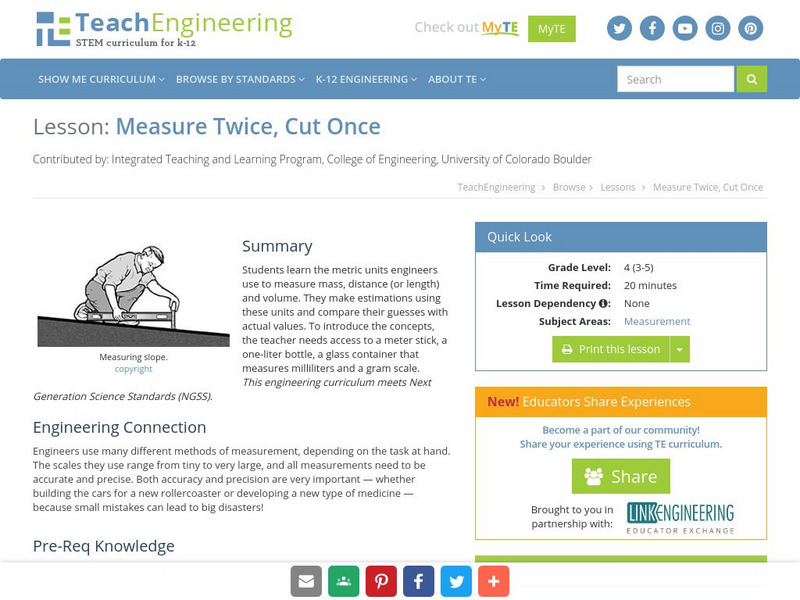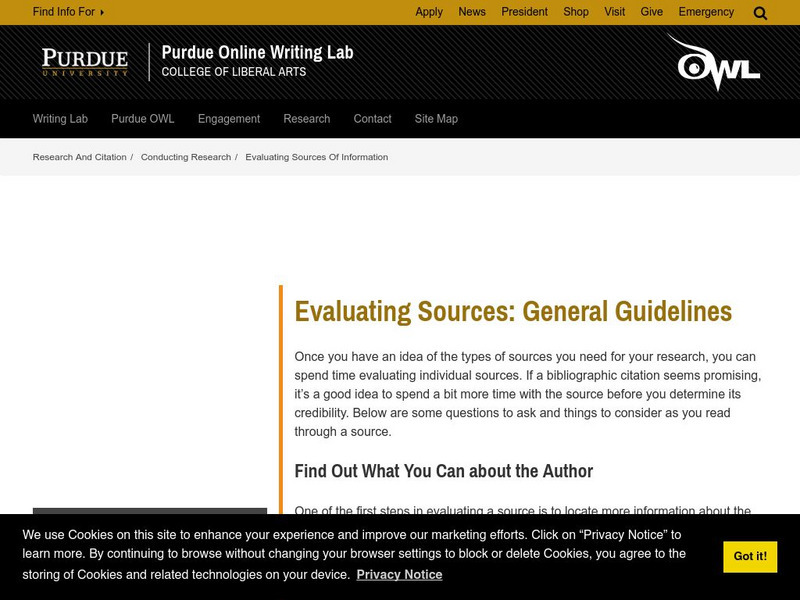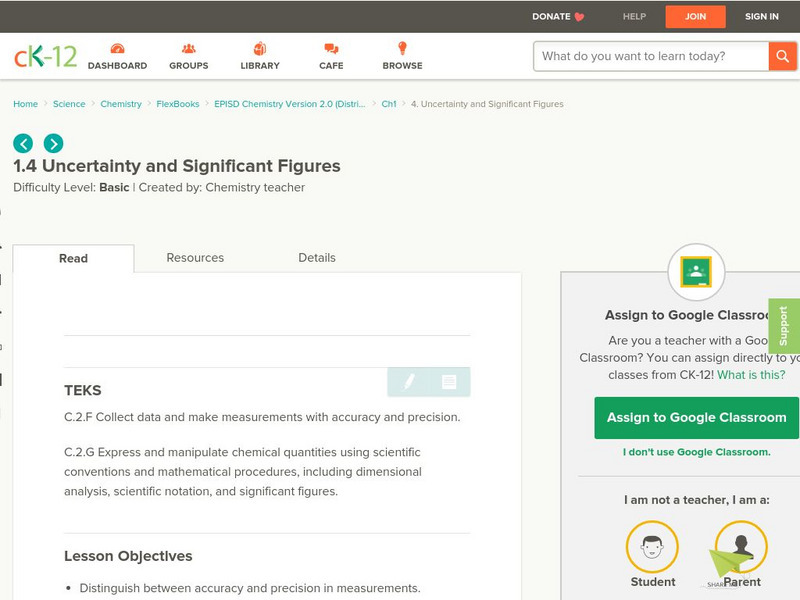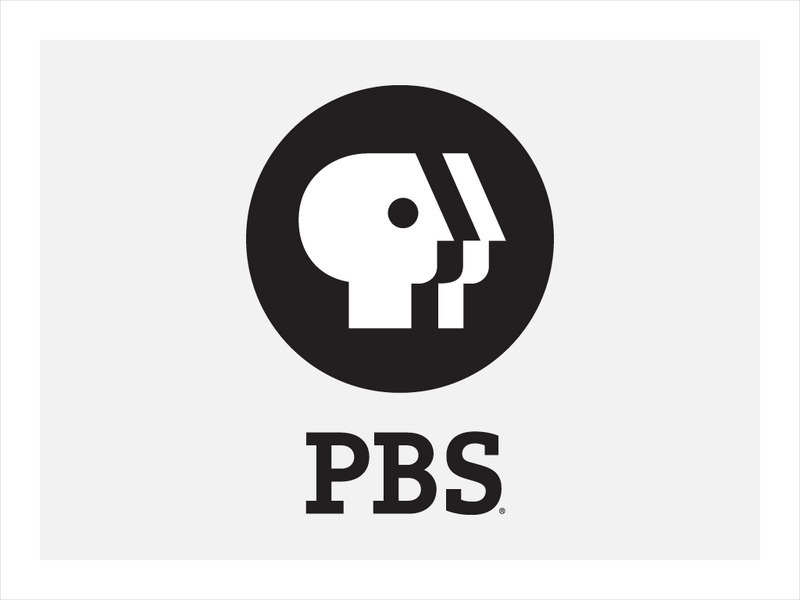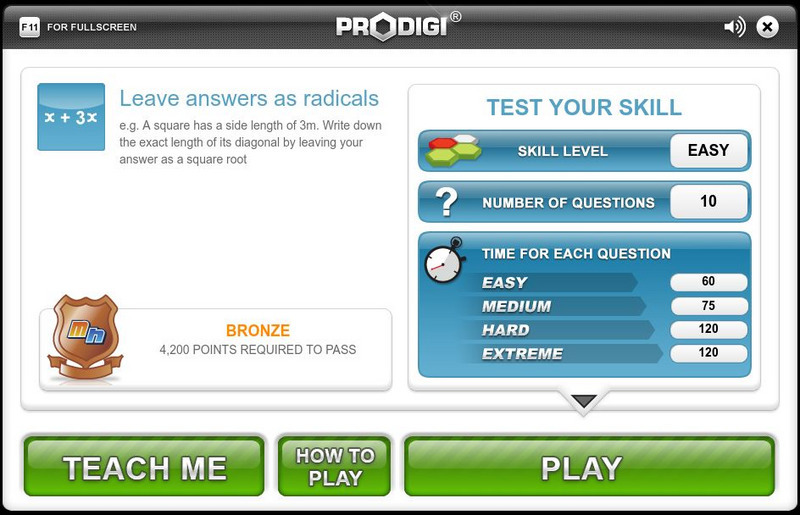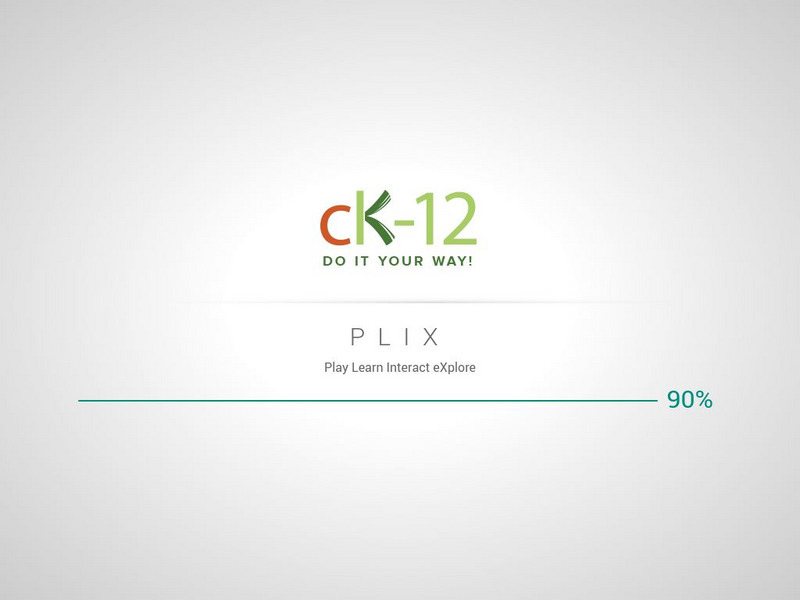TeachEngineering
Teach Engineering: Measure Twice, Cut Once
Young scholars learn the metric units engineers use to measure mass, distance (or length) and volume. They make estimations using these units and compare their guesses with actual values. To introduce the concepts, the teacher needs...
Texas Education Agency
Texas Gateway: Measurement
Given investigation quantitative data, students will determine its degree of precision and/or accuracy and causes for uncertainties in measured data.
Utah Education Network
Uen: Reading Fluency
This lesson engages students in reading fluency practice. Teachers will modeling auditorily, use timed self-assessments, and ensure partners give feedback to motivate the students.
Other
The Freedom Forum Online
This Freedom Forum site is dedicated to promoting a free press. Journalism education and "improving understanding between the media and the public" are a major focus. Budding journalists will enjoy this site. Includes links to news...
Online Writing Lab at Purdue University
Purdue University Owl: Evaluating Sources: General Guidelines
This entry focuses on evaluating your sources while reading them, giving suggestions on what to look for when reading.
CK-12 Foundation
Ck 12: Episd: Physics: 1.8 Working With Error
[Free Registration/Login may be required to access all resource tools.] This learning opportunity examines two angles of working with error. Students will practice taking measurements with accuracy and precision and then consider the...
CK-12 Foundation
Ck 12: Uncertainty in Measurements
[Free Registration/Login may be required to access all resource tools.] In the following online lesson students will learn to distinguish between accuracy and precision in measurements and to also calculate the percent error of a...
CK-12 Foundation
Ck 12: Unit Conversions, Error, and Uncertainty
[Free Registration/Login may be required to access all resource tools.] Students explore a science investigation learning module including conversions, error, and uncertainty in scientific measurement.
PBS
Pbs Learning Media: Uno Fitness Lesson Plan
This lesson plan uses the popular card game, UNO. Young scholars form small groups, and then take turns picking up cards and performing a specific exercise. Each card color has a designated exercise associated with it and the number on...
PBS
Pbs Learning Media: Fitness Bingo Lesson Plan
This instructional activity is similar to traditional bingo. Each student gets a fitness bingo card. Creating space between them and their peers, students will act out the exercise if they have it on their bingo card.
PBS
Pbs Learning Media: Minute to Win It Lesson Plan
This lesson is based on the popular game show, Minute to Win It. Students work as a whole class to perform various exercises for one minute in order to gain points.
Texas Instruments
Texas Instruments: Significant Figures/accuracy
This StudyCards stack enables students to review definitions and the rules for rounding numbers and using significant figures.
Texas Instruments
Texas Instruments: Learning Measurement Conversions Through Statistics
Students learn the conversion relationship between inches and centimeters through data collection. The data collected results from measuring items using inches and centimeters as the units. They use a TI-73 to input the data into lists...
Science Education Resource Center at Carleton College
Serc: Precision in Measurement Finding When an Object Changes Color
This activity is an introduction to measurement, especially precision. Young scholars should know the difference between precision and accuracy in measurement. They will be able to answer the questions: At what temperature does the mood...
Other
Western Illinois University: Plagiarism and the Web
An essay on the challenge of plagiarism for teachers and the temptation for students, with helpful suggestions.
Other
Bellevue: Accuracy vs. Precision & Error vs. Uncertainty
A really nice distinction here in this longish piece from the Bellevue Community College. It's not just accuracy vs. precision, but also error vs. uncertainty. This is a necessary additional consideration for any paper on the topic.
University of California
University of Calilfornia: Significant Figures Ii
This site from the University of California provides a lengthy and intelligent discussion of sig figs, absolute and relative precision, accuracy, precision in calculations, rounding off, and the whole shooting match of how we report what...
PBS
Pbs Teachers: Scientific American: The Intimate Machine: Weighing In
Explore the "intelligent floor," which contains sensors that can track movements, and emulate the weighing technique associated with this technology. Explore the relationship between volume and mass and the difference between accuracy...
Mangahigh
Mangahigh: Number: Leave Answers as Radicals
This site provides students practice with the concept of radicals. Students can learn about the topic by completing an interactive tutorial. Students can then take a ten question timed test to practice the skill.
TeachEngineering
Teach Engineering: Getting It Right!
In this lesson, students will investigate error. As shown in earlier activities from navigation lessons 1 through 3, without an understanding of how errors can affect your position, you cannot navigate well. Introducing accuracy and...
CK-12 Foundation
Ck 12: Plix: Measurement Uncertainty
[Free Registration/Login Required] In this interactive you will measure the box against the three different rulers to best determine the height of the box with each ruler. You will need a sign-in to access this media, but it will be well...
Sophia Learning
Sophia: Adding With Significant Figures
A brief presentation helping the learner understand how many significant figures to use when adding numbers.
Other
Artel: Lab Report 4: Defining Accuracy, Precision, and Trueness
This maker of precision instruments presents this solid article on the topic of accuracy and precision. Great discussion of types and sources of error, and quality control.
Lumen Learning
Lumen: Evaluating Sources: Introduction to Online Sources
This is an introduction to evaluate methods to assess the quality of online sources. Click the next button on the right bottom.


